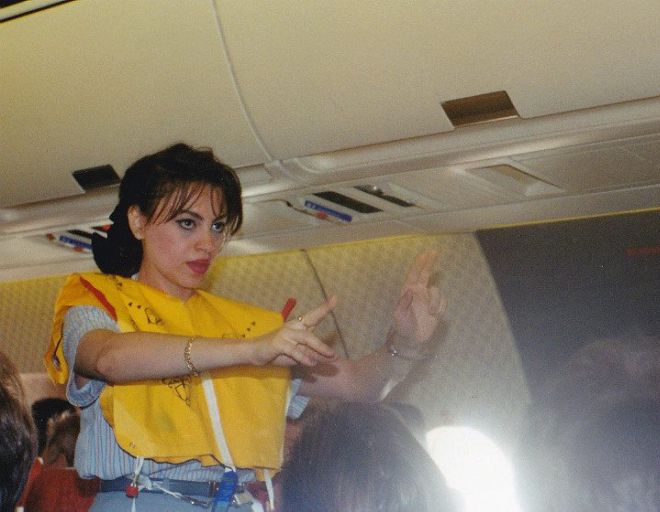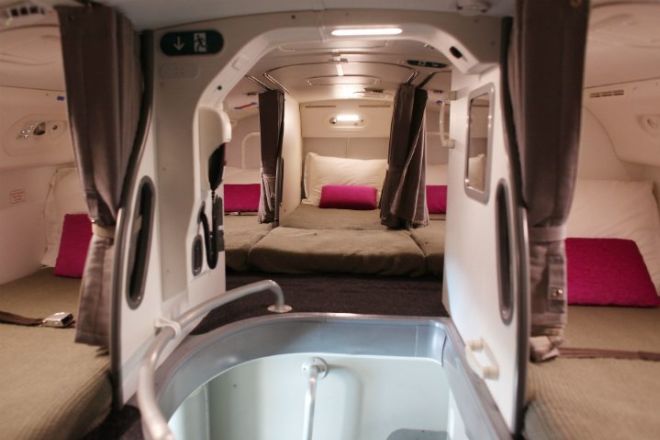No matter the length of a trip, the most dangerous part of any flight is take-off and landing. Control of the plane is basically completely in the hand of the pilots during those times. That margin for human error means those periods are most prone to problems.

Wikimedia
Statistically speaking, however, it is much safer to fly than to drive. According to US government research, the odds of being in a fatal motor vehicle accident is 1 in 98, while the odd for being in an air crash catastrophe is 1 in 7,178 in a lifetime.
There are more surprising facts to come about the world of commercial aviation, keep reading!
24. Can the Flight Crew Sleep on Flights?
The flight crew has a grueling schedule and doesn’t have the luxury of dozing off the minute they reach their seats like the rest of us do. However, on long-haul flights, there’s a special sleeping cabin for the staff. Most Boeing 777 and 787 jets have these windowless sleeping quarters.

Chris McGrath-Getty Imges
These sleeping pods are usually above or below the galley. Pilots also get to snooze on longer flights and are assigned rest periods during which their co-pilot mans the controls. The pilots’ sleeping berth is usually located in its own separate compartment.